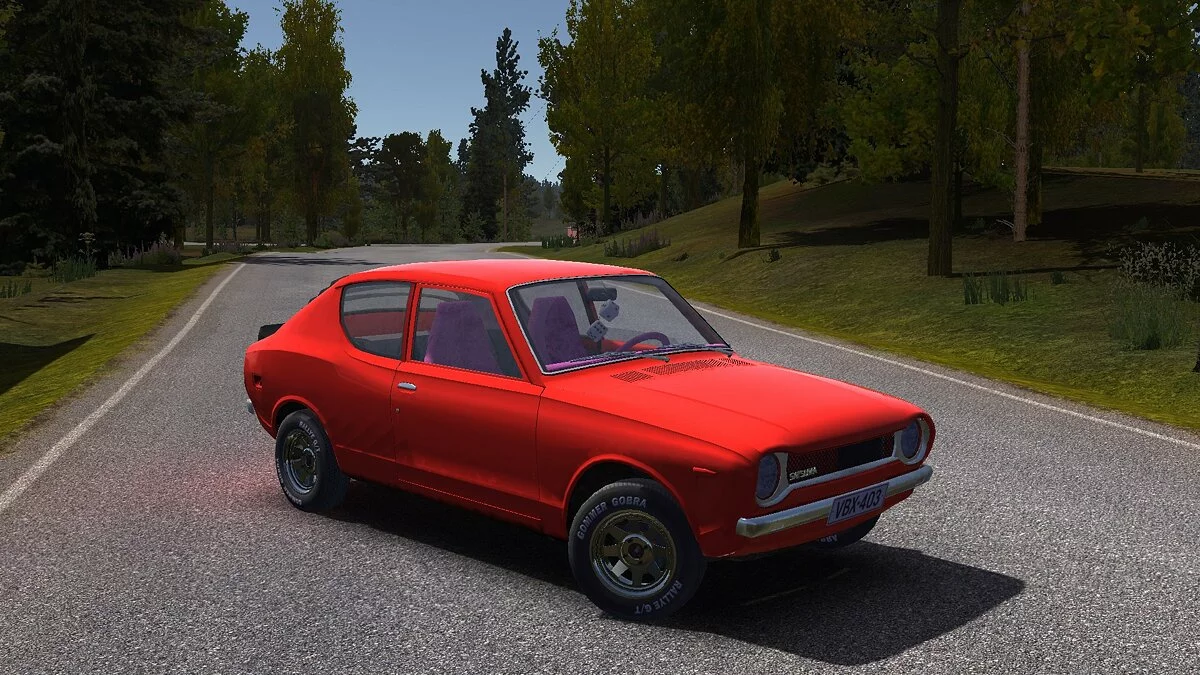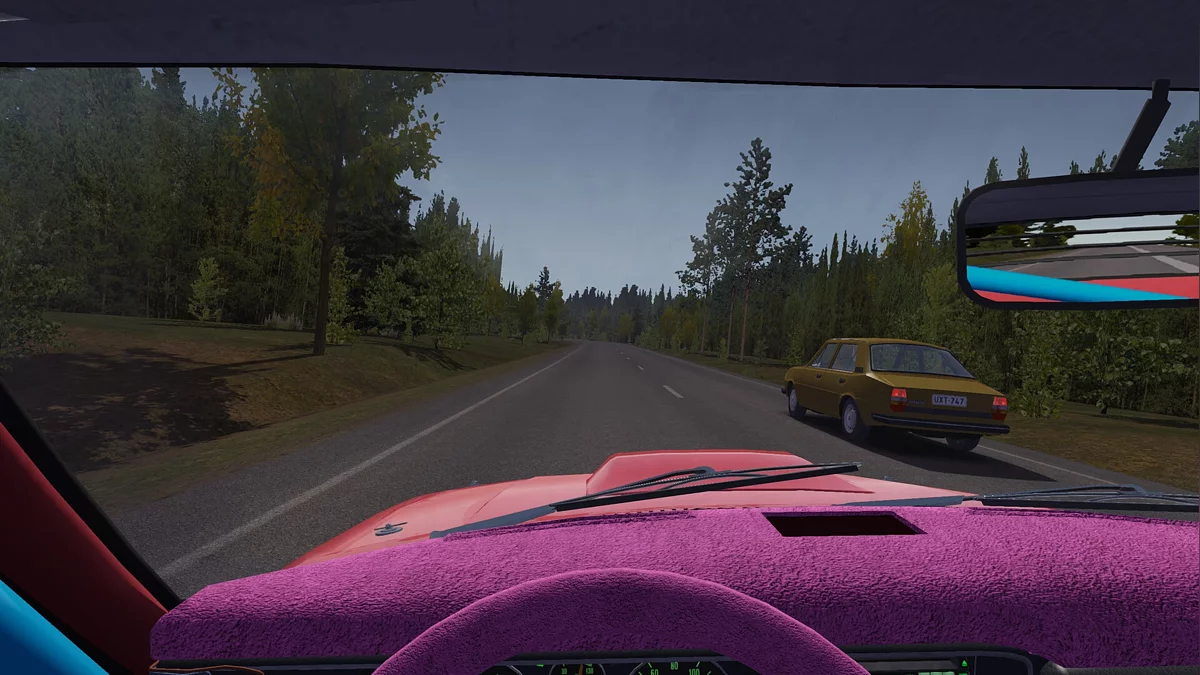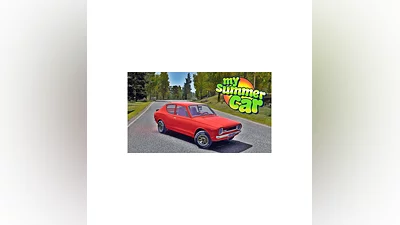A hot Finnish cocktail of a third-person survival simulator and car arcade. The player is given complete freedom of action in a large open world of rural Finland, and the only task is to restore an old family car. How to make a living and where to find all the necessary parts depends on the player's skill and luck.
The early 90s. A depressed Finnish village, a true backwater. The main character is an 18-year-old young man whose parents have gone on vacation to Tenerife for the summer, leaving him in charge of the family home. All he has for entertainment is beer in the fridge, a real Finnish sauna, and boat rides. His needs range from paying utility bills to finding food and money for beer, which he has to manage somehow. For instance, by participating in and winning a local crazy rally.
Opening the door to the garage where a 1974 Satsuma AMP has been sitting for years, the hero embarks on a series of exciting adventures that arise literally out of nowhere, allowing him to learn more about life around him and find his place in this world. He learns to repair and modify the car; gets involved in conflicts with locals and makes new friends; finds himself in dangerous situations due to unruly machinery; and even finds love.
In My Summer Car, there are few stories, but all of them are connected with characters seemingly taken from real life: a beloved but ill grandmother, a good-natured uncle, a drunken neighbor, a slacker best friend, etc. Everyone needs help, and there are small moral choices to be made. As the "Satsuma" transforms from junk into a normal car, the hero himself changes. He matures, evolving from a slacker into an experienced mechanic and racer, learning to overcome difficulties.
My Summer Car may not shine with visual beauty, but it pulls you in with the atmosphere of the Finnish countryside and authentic Scandinavian nature, with its endless forests, lakes, swamps, and rivers.
The action takes place in the fictional area of Peräjärvi — an open world that combines rural landscapes, several villages, wild natural territory, with a significant part of it being flooded by a lake. Everything is connected by a ring road and a couple of smaller roads, including dirt roads.
There are points of interest: the main character's house (the most detailed), stores (where you can buy food and car parts), a workshop (for repairing and modifying the car), an airfield, a bar and nightclub, a radio tower, a farm, and other places. Each is tied to a quest or an interesting story; for example, taking a photo of the remains of a house that burned down long ago can reveal the ghost of its owner.
The game world is also filled with useful items — sets of tires, tools, car parts, ready-to-transport logs, expensive alcohol, a video camera, fireworks, and so on. Such items can be freely collected and provide a decent boost to progress in the game. The map is open from the very beginning, and players can freely explore its boundaries.
At one time, My Summer Car became famous for its meticulous implementation of the car restoration process. The Satsuma consists of hundreds of parts, each with its own place and function. Most parts are geometrically accurate, adding complexity to the assembly process. Missing a small piece can prevent the installation of the next part or cause a leak after complete assembly.
The restoration itself consists of clear stages: assembling the chassis, engine, and transmission, installing wings, doors, and bumpers, and assembling the dashboard and interior. However, the assembly of the chassis and engine alone consists of three dozen steps. Mistakes at any of these steps will require a complete reassembly.
Starting the car has its own sequence of actions: pouring in antifreeze, coolant, oil, fuel, adjusting and leveling the car, tuning the engine, and turning on the dashboard. But that's not all, as the car hasn't been tested on the road. Problems can arise for various reasons.
Oil is leaking: are there gaskets that weren't installed or blocks that weren't tightened properly? The car won't start: are the valves too open or did water get into the fuel tank? A brake line came off during a turn, and the car went into the ditch: is it the wrong hose or was it forgotten to be tightened? Solving these problems depends on the player's ingenuity, and their occurrence is due to the accuracy and care taken during assembly.
The protagonist of My Summer Car has a number of needs that must be met for survival: thirst, hunger, stress, rest, not to mention money. Among possible hobbies are hunting, fishing, making coffee, exploring the world, and more. These activities add another layer of depth to the gameplay and allow the player to gain certain advantages.
Running around the map on foot is unnecessary — there are various modes of transport available for completing tasks: a motorcycle, tractor, motorboat, septic truck, and others. However, reckless driving is not an option — the police are always on the lookout for speeders. One must also keep an eye on the condition of the vehicles, regularly servicing and cleaning them to avoid breakdowns and accidents on the road.
Tasks include: participating in rallies and drag races, posting flyers on the streets, making and selling Finnish homemade wine from sugar, picking berries and strawberries, gambling, delivering groceries to grandma, emptying neighbors' septic tanks, and even picking up a drunk neighbor from the city pub. And if that's not enough — there are always mods that add various content.
TOP-5 mods for My Summer Car:
- Tire Racks — adds shelves for tires;
- Fast Travel — allows for quick travel to known locations on foot;
- Lantern — hangs a lantern in the front yard that turns on with the garage lights;
- Reduced Flat Trees — reduces the number of flat trees on the map to make it feel more open;
- CD Player Enhanced — adds an enhanced CD player with mp3 support and unlimited CD capacity.



![My Summer Car (PC) [Russian Federation] [Standard]](https://files.vgtimes.com/si/shop_116744310_en.webp)


